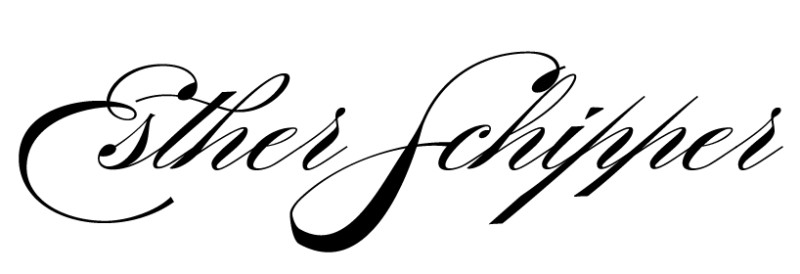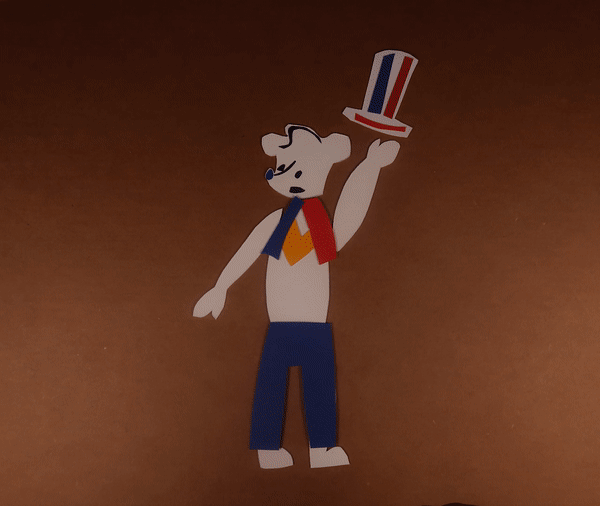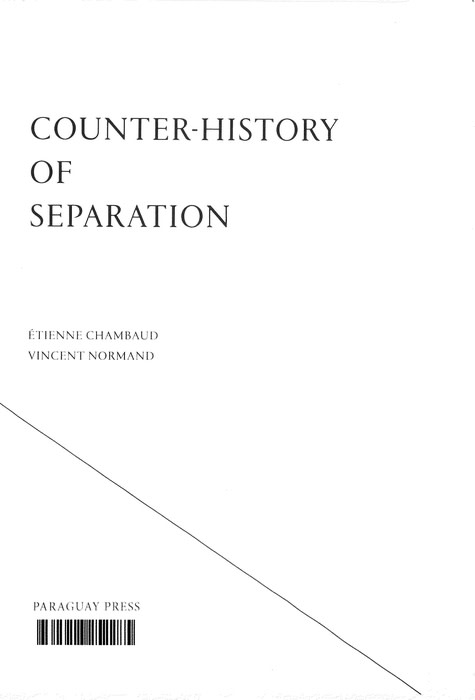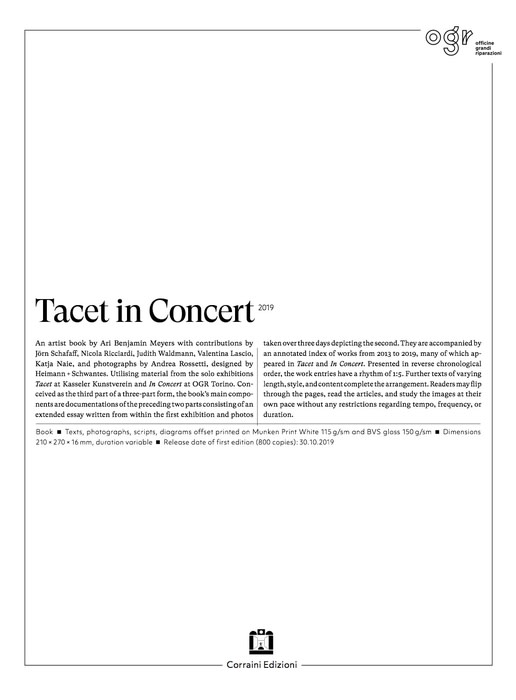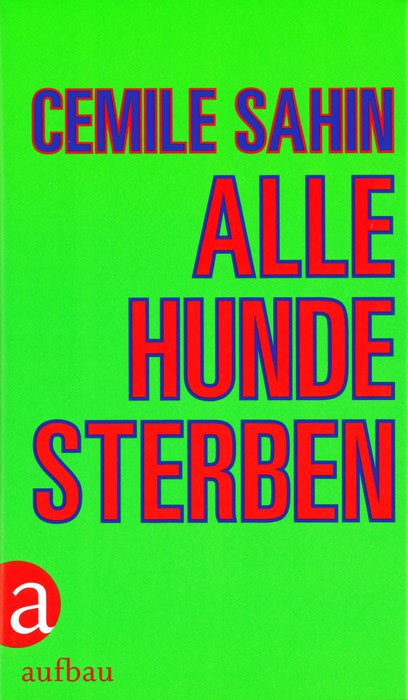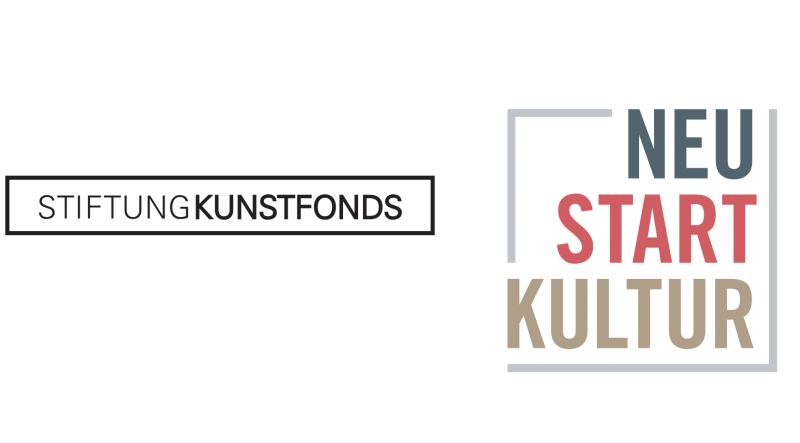Willkommen: Hier finden Sie die deutsche Fassung des Briefes aus BerlinWelcome to the Letter from Berlin! This month the Letter from Berlin begins with our exhibitions by Etienne Chambaud and Rosa Barba opening at the gallery. Please join us tomorrow, Saturday July 3, 2-8 pm. And of course, we hope you will visit our pop-up exhibition, En la casa de Marquès, in Palma de Mallorca beginning July 12, on view through July 31. As the travel season begins, we highlight exhibitions by Simon Fujiwara at Kunstinstituut Melly in Rotterdam and the Fondazione Prada in Milan. Ari Benjamin Meyers' The Long Parade will bring music to locations along the Flanders coast through October. His project is part of the 7th Beaufort Triennial, which also commissioned a permanent sculpture by Rosa Barba, Pillage of the Sea. Also in Flanders, Ryan Gander and Ugo Rondinone are participating in Paradise Kortrijk 2021, the triennial for contemporary art, with works installed throughout the city. In Arles the Luma Foundation is celebrating the completion of its creative campus with new permanent commissions, a new collection presentation, and temporary exhibitions. In Reggio Emilia an exhibition with Thomas Demand and Martin Boyce remains on view through Sunday. Gabriel Kuri's presentation at Saint-Martin Bookstore in Brussels has changed every week. Closer to home, in Berlin's Akademie der Künste, a new work by Cemile Sahin is on view. We hope you enjoy our Letter from Berlin! |
|
|
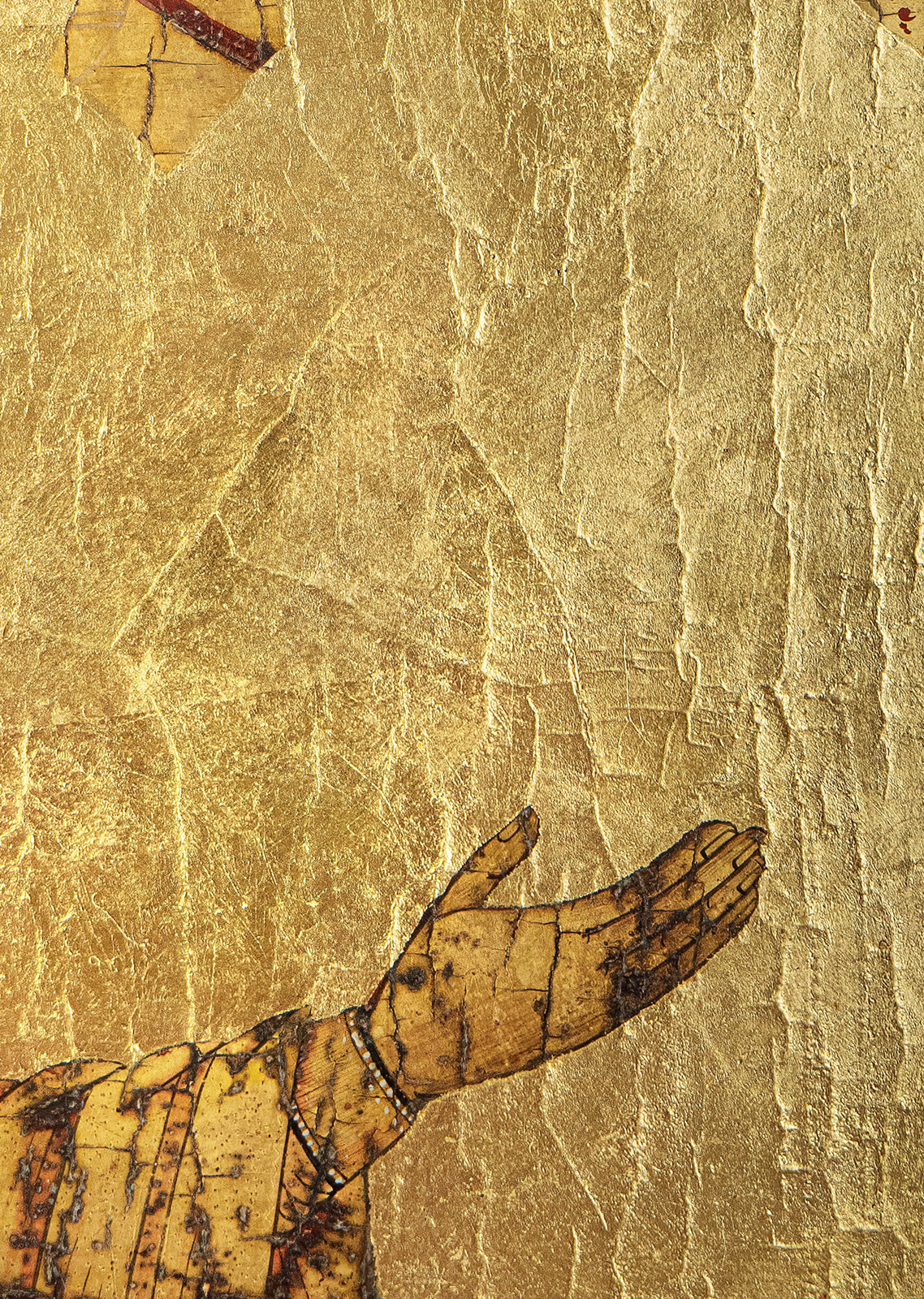
| Detail: Etienne Chambaud, Uncreature, 2021. Photo © the artist
| |
|
Etienne Chambaud’s exhibition Inexistence, the artist’s first with the gallery opens tomorrow, July 3. The works included in the exhibitions are a scent and a sound installation, a sculptural work generating a pattern of temperatures, three light installations, glass works, bronze sculptures and modified panel paintings.
The title, Inexistence, suggests the exhibition as condition of contradictory states, as a site where things and beings could alternatively or simultaneously emerge, change or remain absent. The works in the exhibition share a certain tension between what can be experienced, seen, and known. They manifest as ephemeral sensations—the perceptions of smell, sound, light and warmth—appearing and disappearing. Yet, in the midst of this exhibition, it is also the spectators’ certainty in their position that is being destabilized, as is the necessity of their presence.
Etienne Chambaud works across a wide spectrum of media, exploring the categories we impose on experiences, objects and disciplines. Individual works, installations and exhibitions destabilize notions of what art is and can be, how an artist conceptualizes and produces a work, and the form, function, and history of the exhibition. Beautiful and complex, Chambaud's works can change the way we see and know. |
|
|
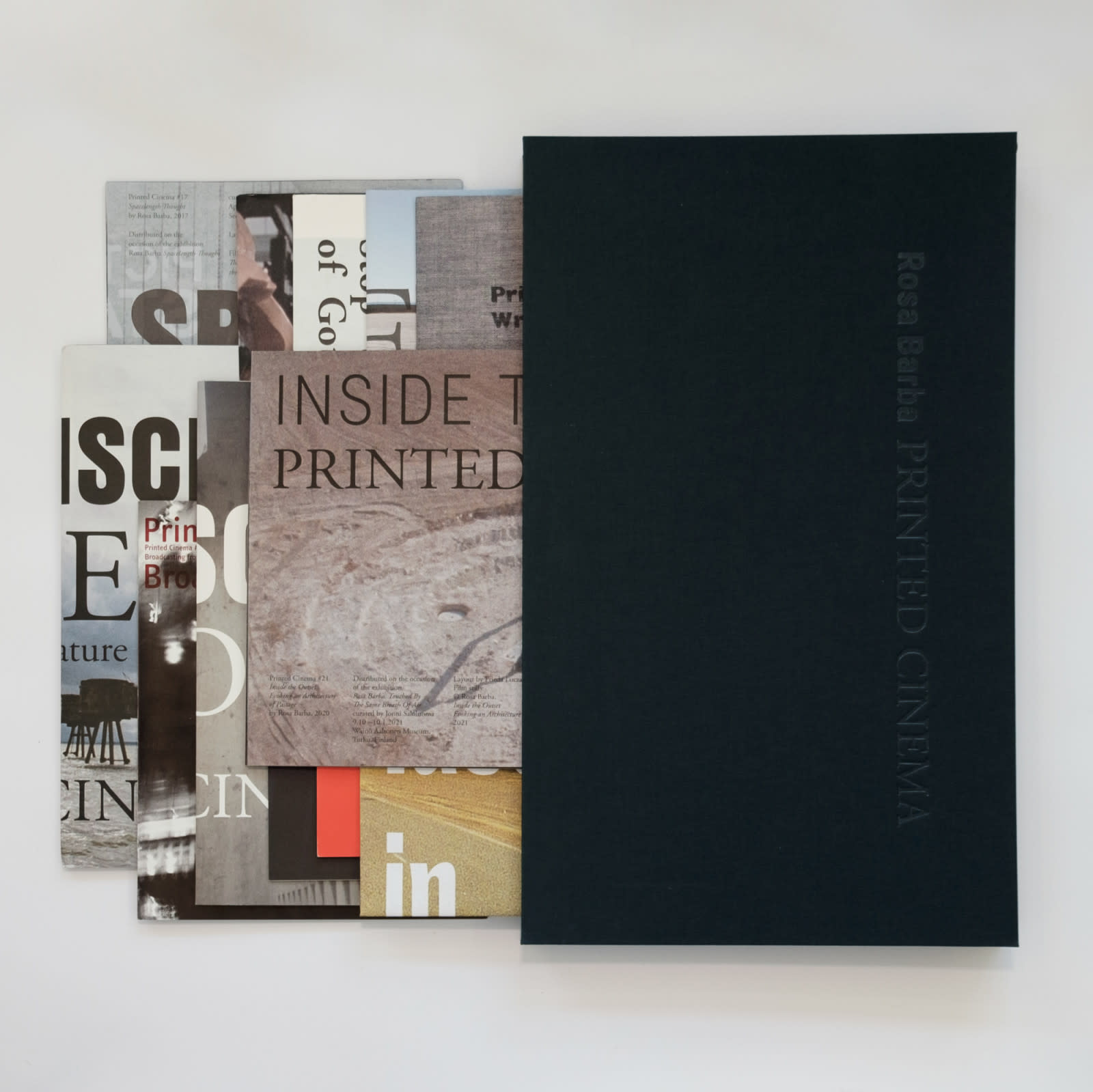
| Rosa Barba, Printed Cinema, 2004 - , edition of 200. Publisher: Dancing Foxes Press. Photo © Mizuki Kin
| |
|
In advance of the Rosa Barba's major solo exhibition opening on August 22 at Berlin’s Neue Nationalgalerie, we present four works at the gallery. In addition, a special boxed edition of the artist’s series of publications, Printed Cinema, published by Dancing Foxes Press, New York, will be launched on the occasion of her presentation at the gallery. Rosa Barba engages with the medium of film through a sculptural perspective. The artist’s installations and site-specific interventions analyze the ways film articulates space, placing work and spectator in novel relationships. With great conceptual elegance and a marked attention to the materiality of the medium, Barba examines the history and industry of cinema and its staging vis-à-vis gesture, genre, information and documents. Entitled Fixed in Fleeting: Performative Objects and Tape Journals, the presentation foregrounds the artist’s sculptural approach to the very medium of film—celluloid—both as material and as repository of knowledge. An integral part of Barba’s presentation is the limited edition boxed set of her Printed Cinema publications. The series, begun in 2004, is published alongside Barba’s film projects, creating a kind of secondary literature, sourced from film stills, text, and photographs, including research material and unused filmic fragments. Addressing key tendencies in her work, the issues are intended not as companions to Barba’s installations but rather as extended and free-form experiments in word and image that can be encountered alongside cinematic experiences or stand on their own. Preorder this limited edition here.
|
|
|
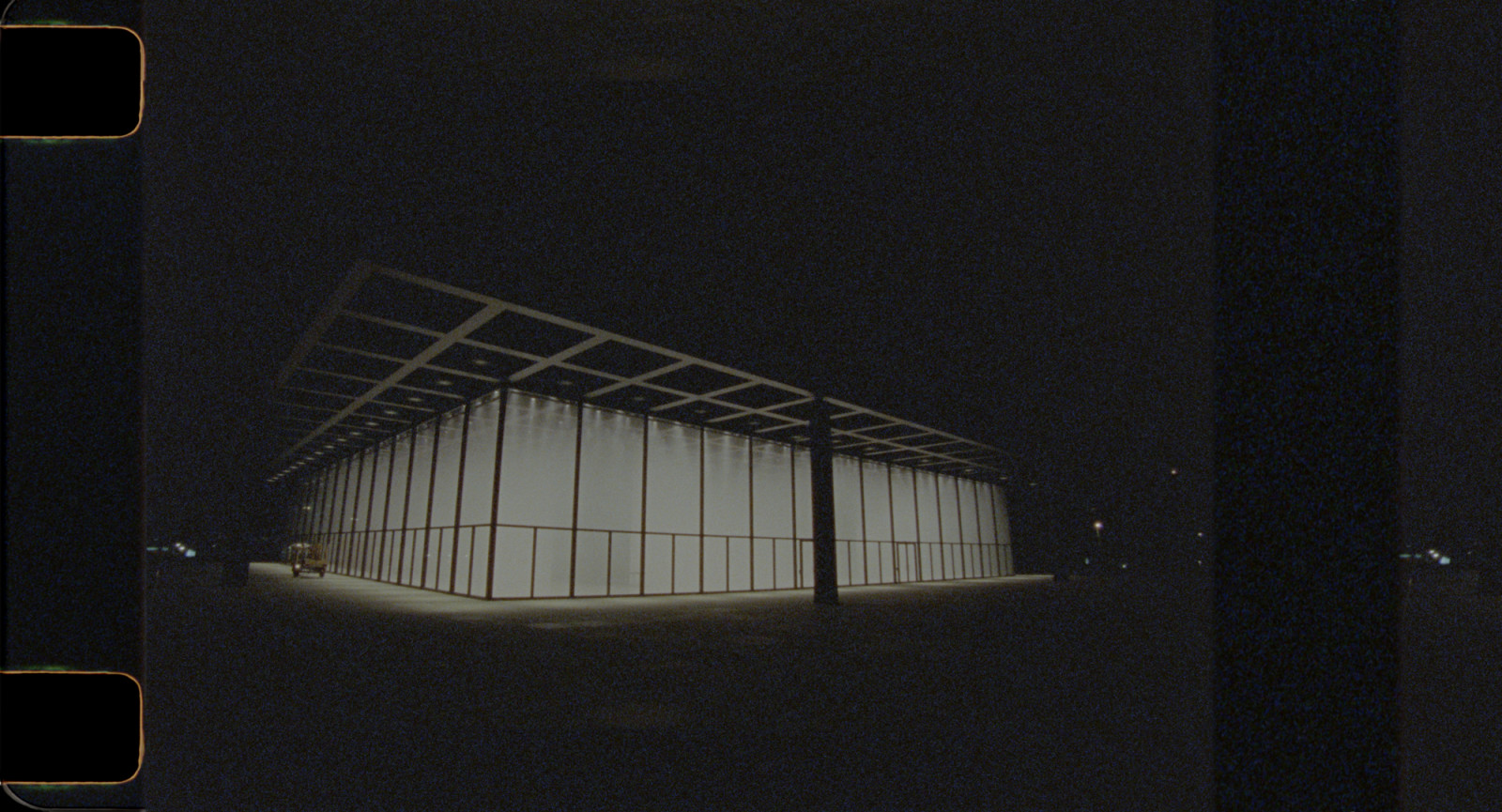
| Rosa Barba, Plastic Limits, For the Projections of Other Architectures, 2021, 35mm film, color, optical sound, duration: 14:30 min. Film still © Rosa Barba
| |
|
For the reopening of the Neue Nationalgalerie, Rosa Barba will present a number of works under the title In a Perpetual Now. In addition to key pieces from her oeuvre created between 2009 and 2021, a new film produced for the exhibition will also be shown. With its architectural structure the large steel construction makes reference to Mies van der Rohe’s early project Brick Country House, while also displaying 15 of her cinematic and sculptural works. Specially produced for the architecture of the Neue Nationalgalerie, the expansive installation follows the principle of cinematic montage, which plays a pivotal role in the artist’s work.
|
|
|
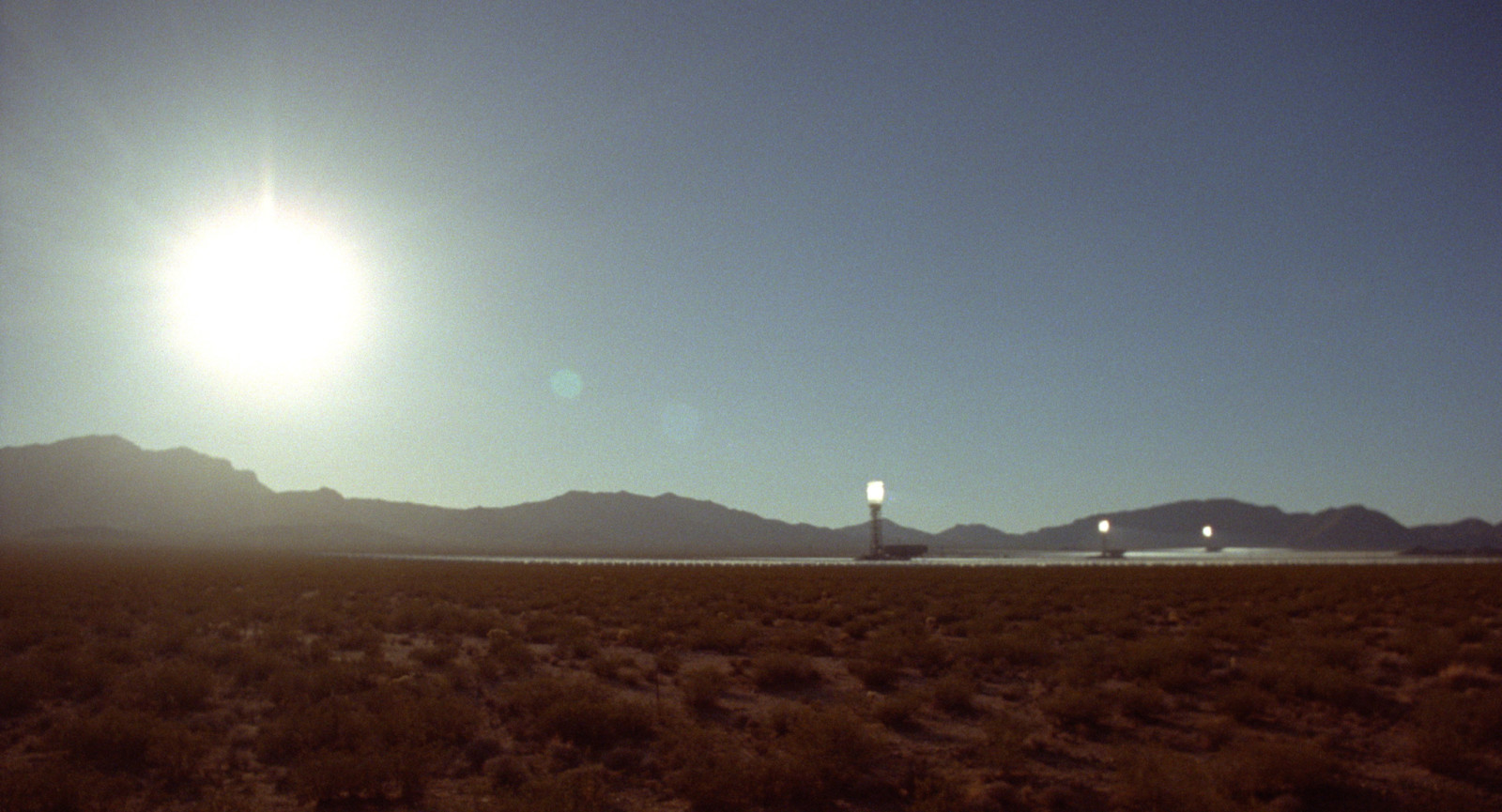
| Rosa Barba, From Source to Poem, 2016, 35mm film, color, optical sound, duration: 12 min.
Film still © Rosa Barba
| |
|
En la casa de Marquès – Esther Schipper in Mallorca |
|
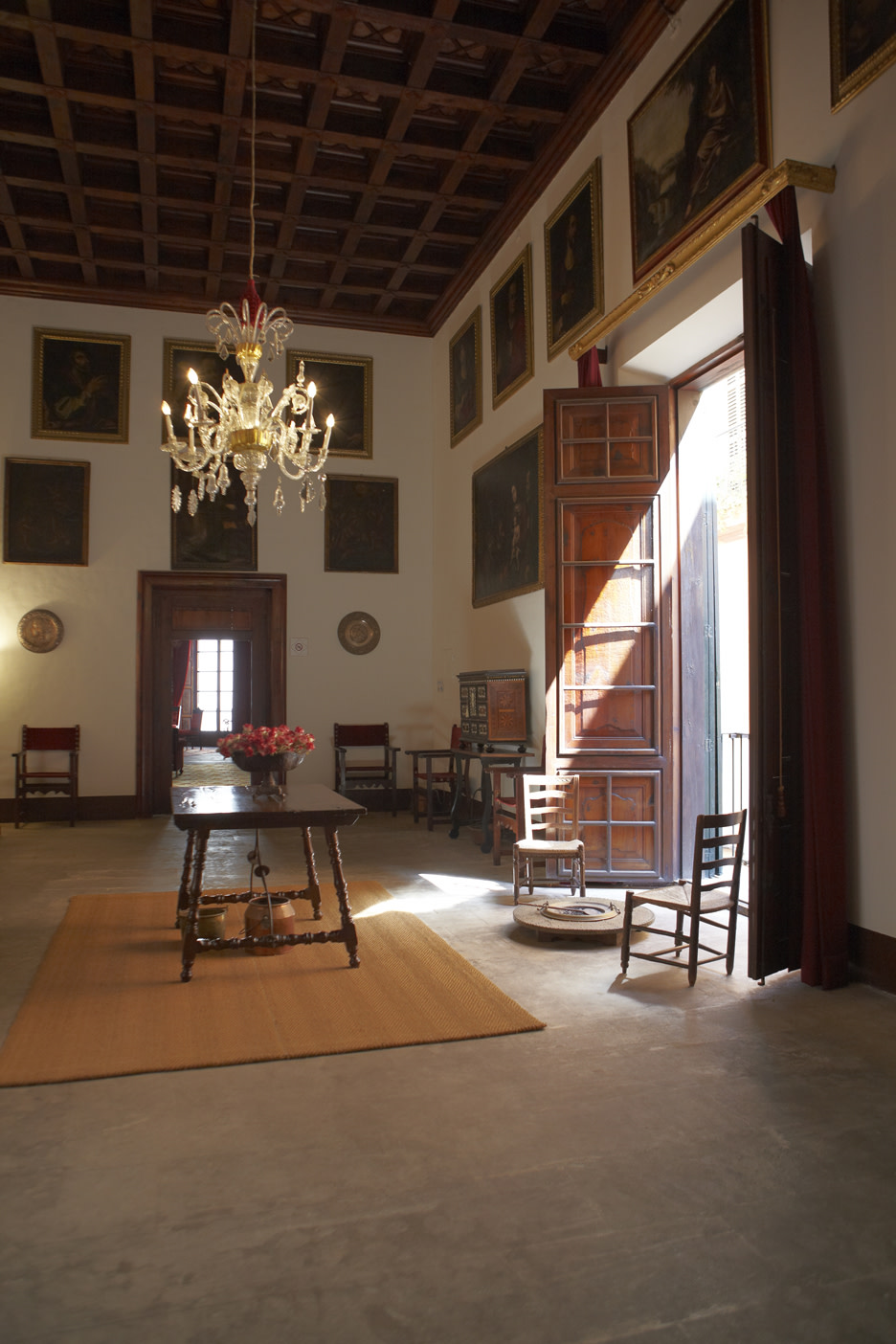
| Photo © Domingo Llull. Courtesy of Casa Museo Can Marquès
| |
|
Visit us from July 12–31 for En la casa de Marquès [Inside Marquès House], a special summer exhibition and the first off-site exhibition in Palma de Mallorca from the gallery.
The exhibition will be held at the former residence of Martí Marquès Marquès, a 19th century bourgeois who built a fortune in Puerto Rico before returning to Mallorca in 1901. Located on Carrer de Can Anglada, between the cathedral and the city hall, the house dates back to the 14th century.
The exhibition will take place on the main floor of the house and will feature an exceptional selection of new and major works by 24 artists of the gallery, including installations, sculptures, paintings, photographs, and works on paper.
With works by: Rosa Barba, Stefan Bertalan, Martin Boyce, Sarah Buckner, Angela Bulloch, Etienne Chambaud, Jean-Pascal Flavien, Ceal Floyer, Simon Fujiwara, Ryan Gander, Francesco Gennari, Liam Gillick, Dominique Gonzalez-Foerster, Rodney Graham, Ann Veronica Janssens, Gabriel Kuri, Isa Melsheimer, Florin Mitroi, Roman Ondak, Ugo Rondinone, Anri Sala, Karin Sander, Julia Scher, and Daniel Steegmann Mangrané.
The architecture of Casa Museo Can Marquès has undergone several transformations over time. Although the entrance hall is baroque, one of the dominant styles is neoclassical, with some peculiarities such as—among others—the elliptical shape of the chapel and of one of the main rooms, an unusual configuration for a private Majorcan residence from that period.
Some of the major transformations were introduced by Martí Marquès Marquès at the beginning of the 20th century. The renovation was carried out by the architect Francesc Roca Simó, author of some of the most relevant examples of Art Nouveau in Palma. Following the latest advances in terms of domestic hygiene, Roca Simó covered the walls of the kitchen—which has remained in the same location since the Middle Ages—with white tiles. Roca Simó also introduced examples of Art Nouveau into the house, such as the dining room and the stone and wrought iron staircase.
|
|
|
Simon Fujiwara – Kunstinstituut Melly
|
|
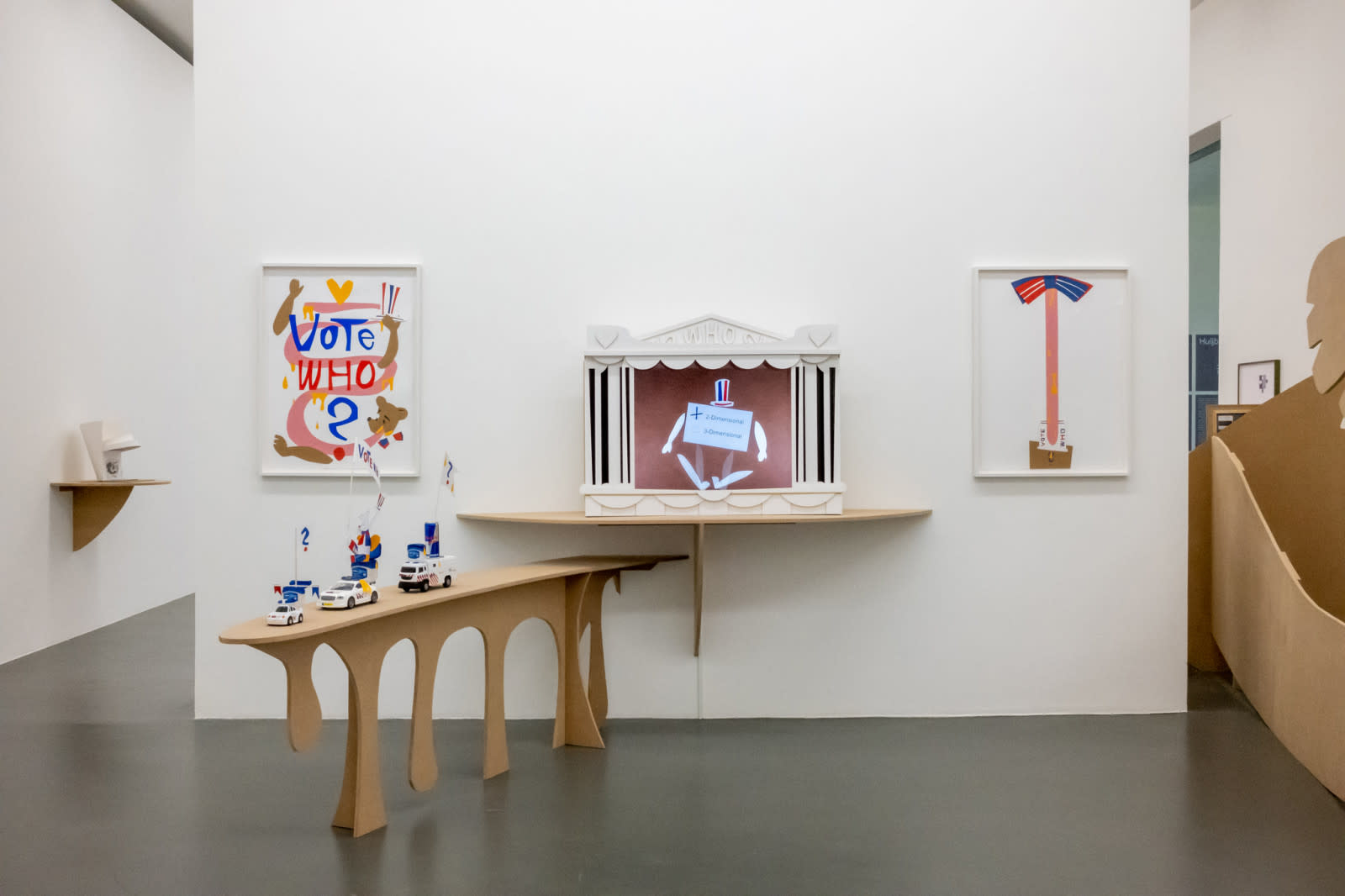
| Exhibition view: Simon Fujiwara, new work, Kunstinstituut Melly, Rotterdam, 2021. Photo © Jeroen Lavèn
| |
|
For his first solo exhibition in the Netherlands, Simon Fujiwara presents works from his most recent project Who the Bær at Kunstinstituut Melly. Developed during the lockdown in the spring of 2020, Fujiwara created a unique cartoon character in the form of a denim wearing bear with a golden heart and an uncontrollably long tongue, that seemingly has no gender, race, sexuality or even a clear design. Without an identity, Who exists only as an image, a status that allows them the freedom to roam a world of online images, appropriating characters, identities, aesthetics and guises in a greedy search for a ‘self’. Made with an instinctive and responsive hand, this exhibition focuses largely on collaged works that introduce us to the basic principles of his character through a meme-like, cut and paste aesthetic. Housed within a fragmented, themed environment of oversize bear cut-outs, we discover the pleasures and traumas, violence and joys of life in the mediated modern world through the absurd adventures of a cartoon bear. Who the Bær can also be followed via their official Instagram account, @whothebaer.
|
|
|
Simon Fujiwara – Fondazione Prada
|
|
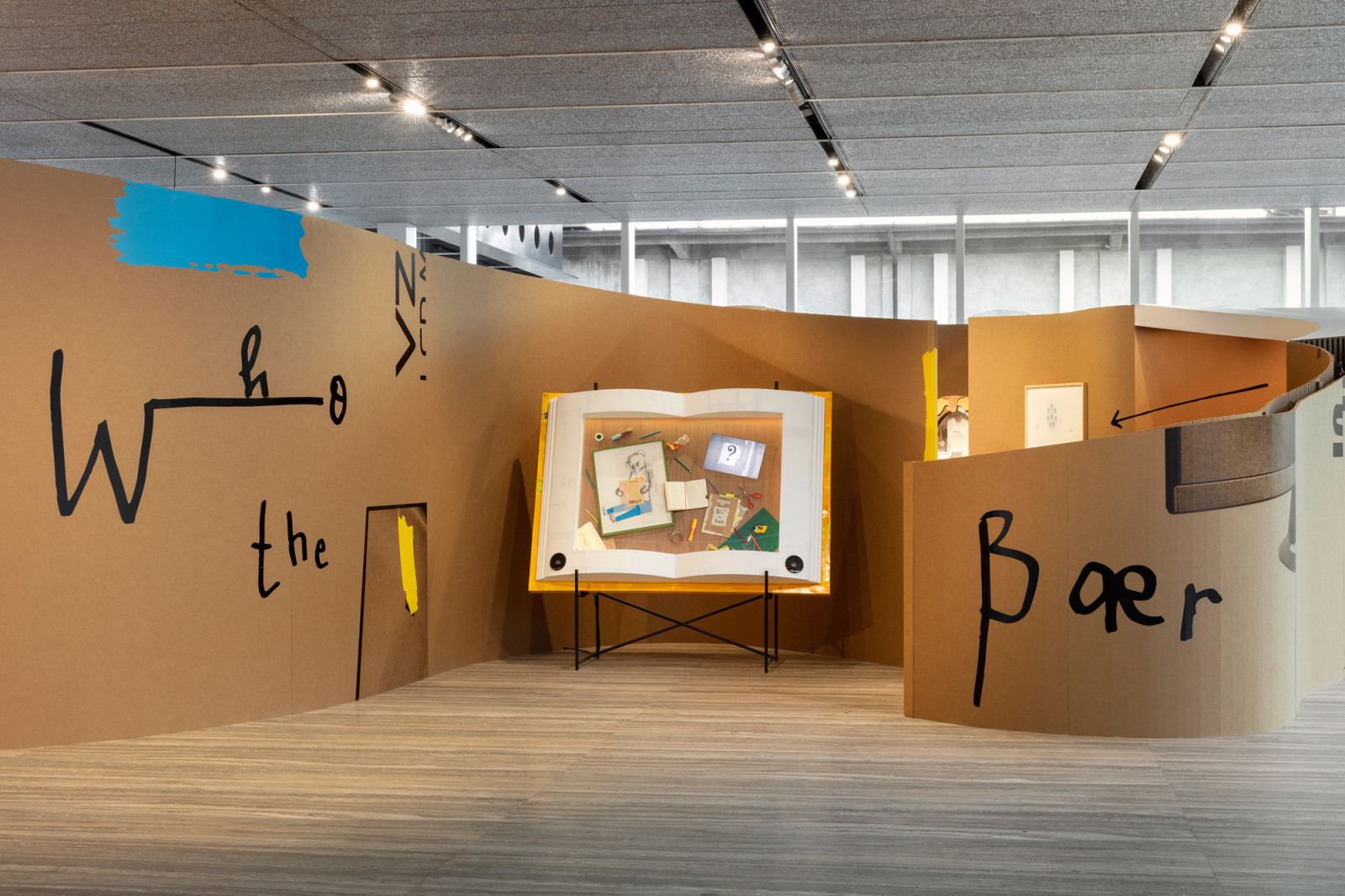
| Exhibition view: Simon Fujiwara, Who the Bær, Fondazione Prada, Milan, 2021. Photo © Andrea Rossetti
| |
|
For this site-specific project conceived for the ground floor of the Podium in the Milan premises of Fondazione Prada, Simon Fujiwara introduces audiences to the fairytale world of Who the Bær, an original cartoon character created by the artist. Who the Bær is a cartoon bear without a clear character – “Who” as they are known, seems to have not yet developed a strong personality or instincts, they have no history, defined gender or even sexuality. Who the Bær only knows that they are an image, and they seek to define themselves in a world of other images. Who the Bær’s adventures are presented at Fondazione Prada in a giant labyrinth made almost entirely from cardboard and recyclable materials and forming the shape of a giant bear. As visitors travel through the bear-like installation, they are introduced to the basic design and formation of the cartoon character of Who the Bær before embarking on a series of adventures that follow Who the Bær around their fairytale world. Told through drawings, collages, sculptures and animations, we witness Who the Bær in their perennial quest for an identity. Inspired by the tradition of fairytales as well as modern animation movies, Fujiwara uses the mechanisms of fantasy to explore some of the joys and traumas we face as a society possessed with images and spectacle.
|
|
|
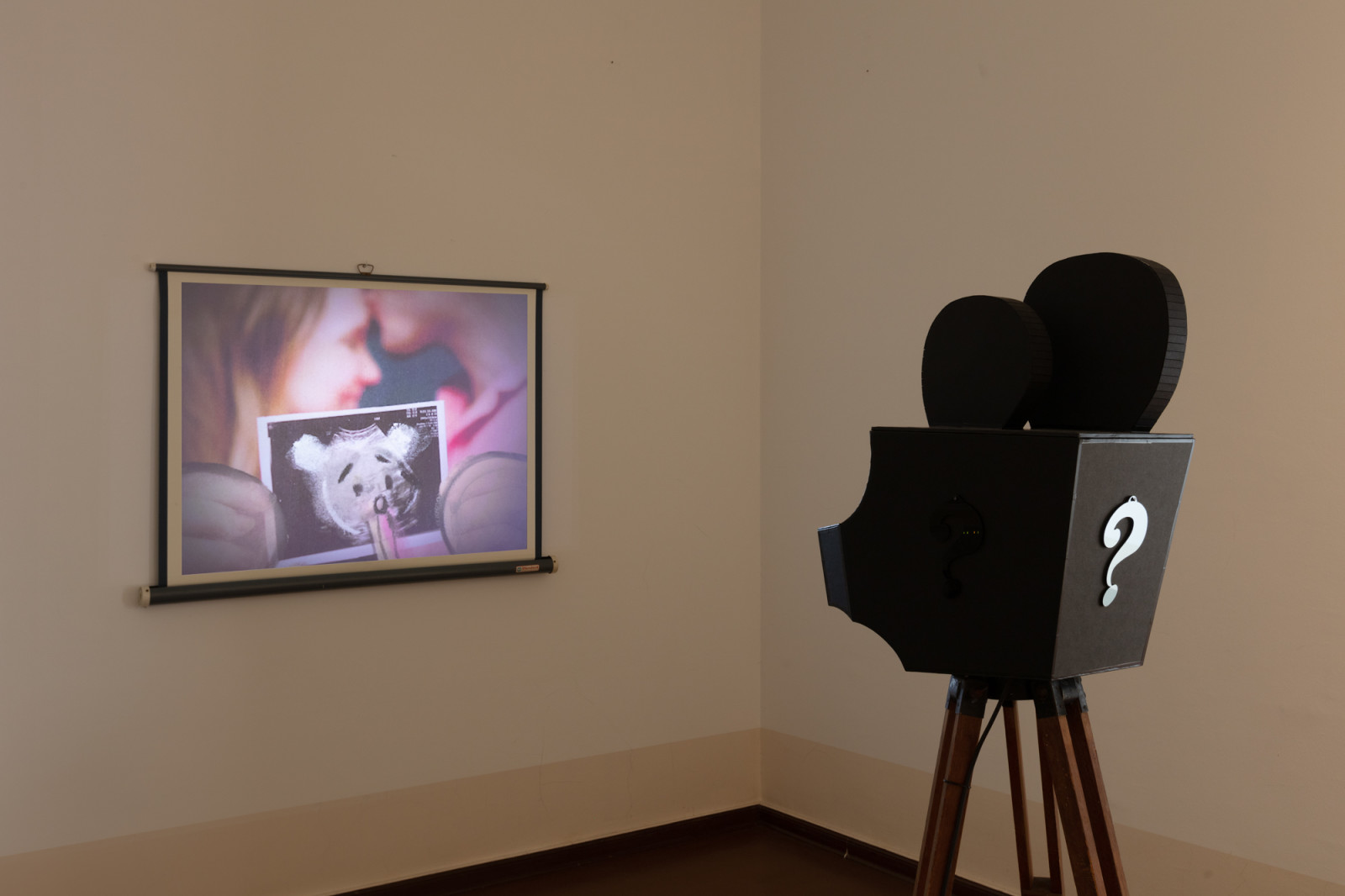
| Simon Fujiwara, Who's Childhood?, 2021, sculptural video installation (cardboard, electrical tape, Plexiglas, antique tripod, projector, projection screen), duration: 2:27 min, 164 x 73 x 73 cm, variable edition of 3.
Exhibition view: AMTSALON, Berlin, 2021. Photo © Andrea Rossetti | |
|
Simon Fujiwara’s acclaimed project Who the Bær was developed during the lockdown in the spring of 2020 and is now the centre of a major exhibition at Fondazione Prada, Milan, and Kunstinstituut Melly, Rotterdam.
|
|
|
Ari Benjamin Meyers – Beaufort 21 |
|
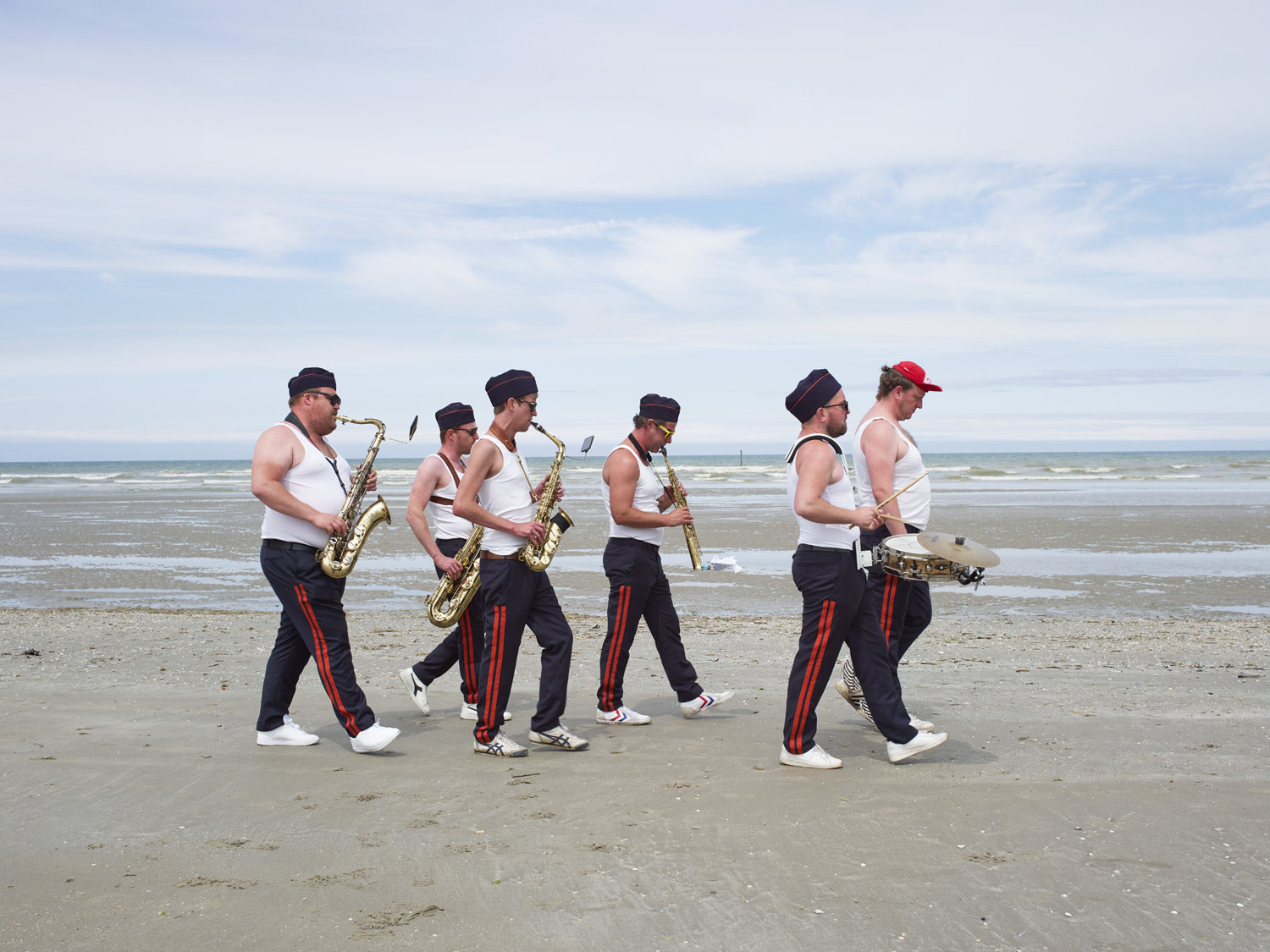
| Ari Benjamin Meyers, The Long Parade (Day 1, De Panne to Koksijde), 2021. Performed at Beaufort 21: 7th Beaufort Triennial, Flanders, 2021. Photo © Kristien Daem
| |
|
For the seventh edition of the Beaufort Triennial, Beaufort 21, Ari Benjamin Meyers, in collaboration with the walking orchestra "Die Verdammte Spielerei", presents The Long Parade, through October 17, 2021.
The Long Parade is a music-based durational performance that is inspired by the brutal history of the Belgian coast, memory and forgetting, and the children’s game "Telephone". Over the course of the summer, the Flemish fanfare band "Die Verdammte Spielerei" will be marching from the French-Belgian border in De Panne to the Belgian-Dutch border of Knokke, performing a new composition by Ari Benjamin Meyers over ten musical parades. For each performance, they are joined by a different local group of musicians that have made their own adaptations of the piece and, in a ritualized manner, will pass the music — and a specially commissioned flag — from one municipality to the next. This performance, in essence an evolving, moving rehearsal, continues over the coming months, undergoing further mutations until the work reaches its finale in Knokke-Heist in October. With The Long Parade Meyers unites the identities and histories of the Belgian coastal municipalities in one new composition that gets adapted by all, celebrating collaboration and recognizing the individuality of each place, while at the same time highlighting the fog of memory as it pertains to the past – both recent and more distant. Participation is free and open to the public. Upcoming performance dates and locations: July 4: Koksijde - Showkorps El Fuerte, Imperior De Percussion and Koninklijke Gemeentelijke Harmonie Koksijde August 1: Nieuwpoort - Koninklijke Katholieke Harmonie Nieuwpoort August 8: Middelkerke - Drawing Pins August 15: Ostend - Melody Makers Ostend August 29: Bredene - accordion group with Alain Billiouw September 12: De Haan - Saxophone Quartet Beaufort September 19: Blankenberge - Shanty Choir Blankenberge September 25: Zeebrugge - Koninklijke Harmonie Vermaak na Arbeid Koolkerke October 17: Knokke - Koninklijke Harmonie Sint-Cecilia Heist |
|
|
Ari Benjamin Meyers – Kunstsammlung Gera and Museum für Angewandte Kunst, Gera |
|
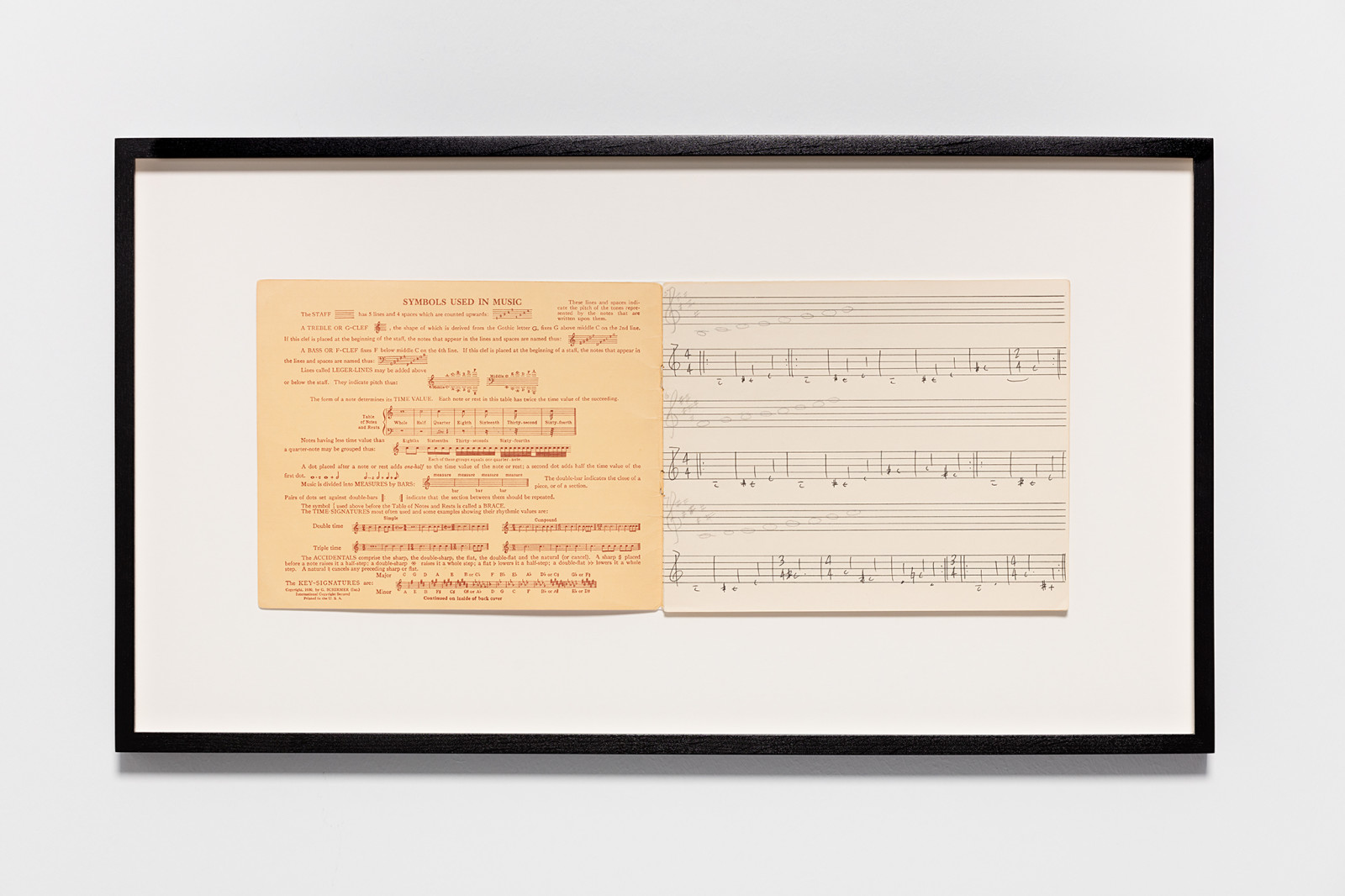
| Ari Benjamin Meyers, Symbols used in music, 2015, Handwritten score on found paper, 17,5 x 43 cm (motif), 32,5 x 58 x 2,8 cm (framed). Photo © Andrea Rossetti | |
|
The exhibition POLYPHON, Polyphony in Image and Sound, at Kunstsammlung Gera and Museum für Angewandte Kunst, Gera, brings together works by international artists, including Ari Benjamin Meyers, that show the clash of multiple voices and sounds in both convergent and divergent compositions. From different time periods - from the 1970s to today - and geographical contexts - including Germany, France, Japan and South Africa - the artists deal with the effect and power of plural sounds.
The installations, videos, performances and drawings deal with perception-related aspects as well as the socio-cultural and political dimensions of polyphony. The polyphony here refers both to the musical term and to the linguistic definition according to Mikhail Bakhtin, which refers to the articulation of opposing systems of expression, codings and perspectives.
Whether in connection with the ideal of unification through sound experiences or the representation of conflicts, the various works question the importance of polyphony in today's society. The exhibition tries to reconcile areas of tension between the multiple and the organized, the individual and the collective, harmony and dissonance.
|
|
|
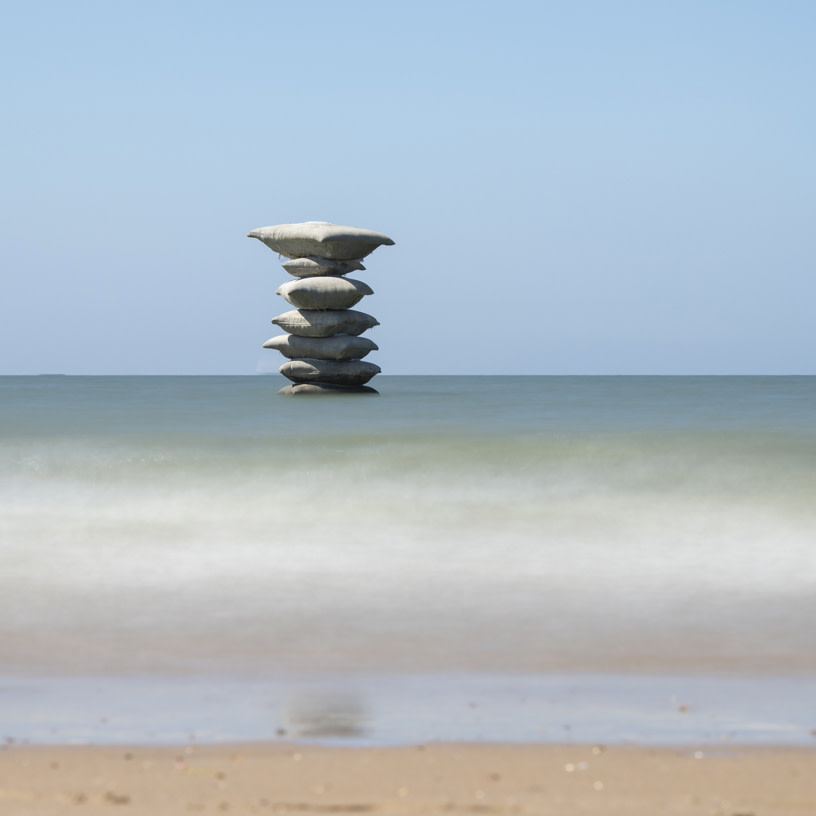
| Rosa Barba, Pillage of the Sea, 2021. Installation view at Beaufort 21: 7th Beaufort Triennial, Flanders, 2021.
Photo © Filip Claessens | |
|
In Ostend, for Beaufort 21, Rosa Barba presents Pillage of the Sea, 2021, a permanent sculpture. Barba has anchored an outsized cairn on the beach, imitating stones by pouring concrete in textile. The textile makes one think of the form of sandbags, with which Barba creates a type of imaginary barrier against the future rise in the sea level. Each stone symbolizes a city, the fate of which is threatened by climate change. Over the years, Pillage of the Sea will be submerged by the waters.
|
|
|
Ugo Rondinone and Ryan Gander – Paradise Kortrijk
|
|
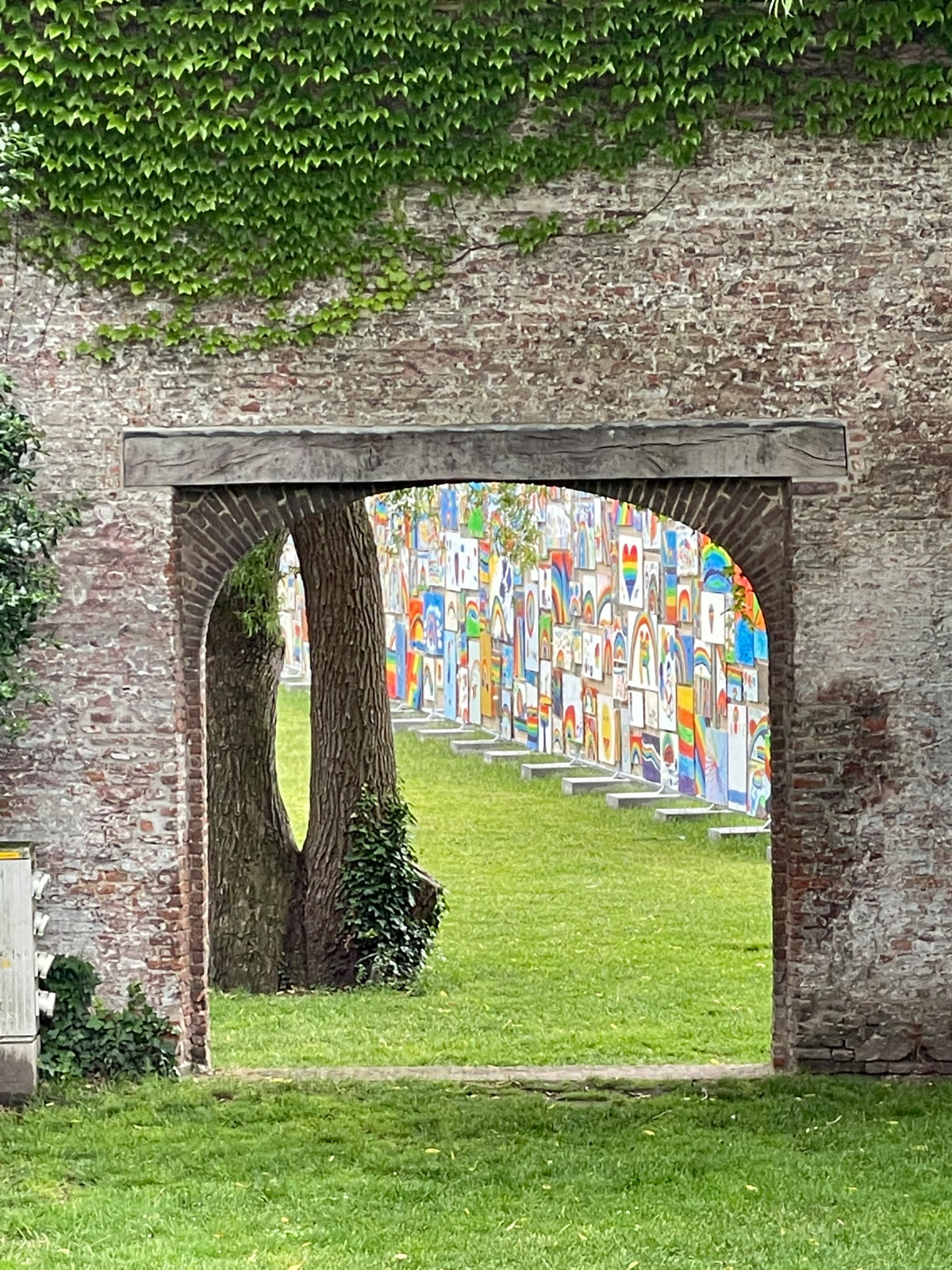
| Detail: Ugo Rondinone, your age and my age and the age of the rainbow, 2021. Exhibition view: Paradise Kortrijk, Triennial for contemporary art, Kortrijk, 2021. Photo © Tara K. Reddi | |
|
During Paradise Kortrijk 2021, Ugo Rondinone's two immense, brightly colored, rainbow-shaped neon displays appear on the roof of the Budatoren and the Residentie Budalys. They project the words ‘LONG LAST HAPPY’ and ‘CRY ME A RIVER’ over the city. Rondinone's versatile oeuvre involves diverse media: from conceptual installations, photography, painting, video, sculpture and drawings, to poetic writings. The references to the inexhaustible energy of nature sit at the core of all his artworks. His rainbow sculptures can be read as a type of landscape art. Working in series is typical for Rondinone - the rainbow is a prominent motif in his oeuvre. In 1997 he created his first installation of a luminous rainbow ‘CRY ME A RIVER’, which was then followed by many others. The powerful exclamation ‘HELL YES!’ appeared on the facade of the New Museum from 2007 to 2010. ‘LONG LAST HAPPY’ was specially conceived for Paradise Kortrijk. Rondinone's participatory work your age and my age and the age of the rainbow, 2021 is also a poetic project full of emotion and hope. Hundreds of children from seventeen organizations and schools in the area of Kortrijk painted rainbows that together formed the largest rainbow painting ever. In these times of global division and inaccessibility, Rondinone takes an open and generous ethical stance. The artist tries to restore our belief in the magic of the moment and the human essence of contemporary art. Another iteration of this project is currently on view at the Belvedere, Vienna.
|
|
|

| Ryan Gander, Advice from the artist's father, 2021. Exhibition view: Paradise Kortrijk, Triennial for contemporary art, Kortrijk, 2021. Photo © Mathieu Van de Sompel | |
|
For Paradise Kortrijk, Ryan Gander brings his statement “...time and attention are our greatest assets...” to life in installations that reveal themselves throughout the city of Kortrijk.
Advice from the artist’s father, 2021 shows a variety of public signage situated around the city, displaying a saying often repeated by the artist’s father when the artist was a child, reminding the viewer of his original statement to ‘appreciate and own our time’.
The works Spending Time, 2021 and Saving Time, 2021, are a pair of black vending machines where you can purchase objects at the standardised price of two euro. Alluding to the theme: ‘the economy of time, money, and attention’, whoever throws in money can become the owner of a stone the artist’s children collected from the beach, or a cast of these stones in black jesmonite with mass produced watches wrapped around them, or porcelain recreations of stones embossed with a geotag of GPS coordinates, or the ISBN of a book, or numbers indicating an important moment in modern history.
With Within your own margins, 2021 Gander offers a series of second-hand books for sale at the Oxfam Bookshop in Kortrijk. Each book bears the artist’s stamp in black ink with one of two texts: “Attention is your greatest asset” or “Within this volume time and space will be radically transformed by you”.
In Search of Time, 2021 consists of ten bronze sculptures. Using the same motif as the jesmonite casts in the vending machine, Gander placed these bronze editions in obscure, unusual locations throughout the city. There’s a map that guides you from the city centre to these places that you would normally pass by carelessly — a short walk. As if on a treasure hunt, Gander invites you to discover urban stories and forgotten parts of the city.
|
|
|
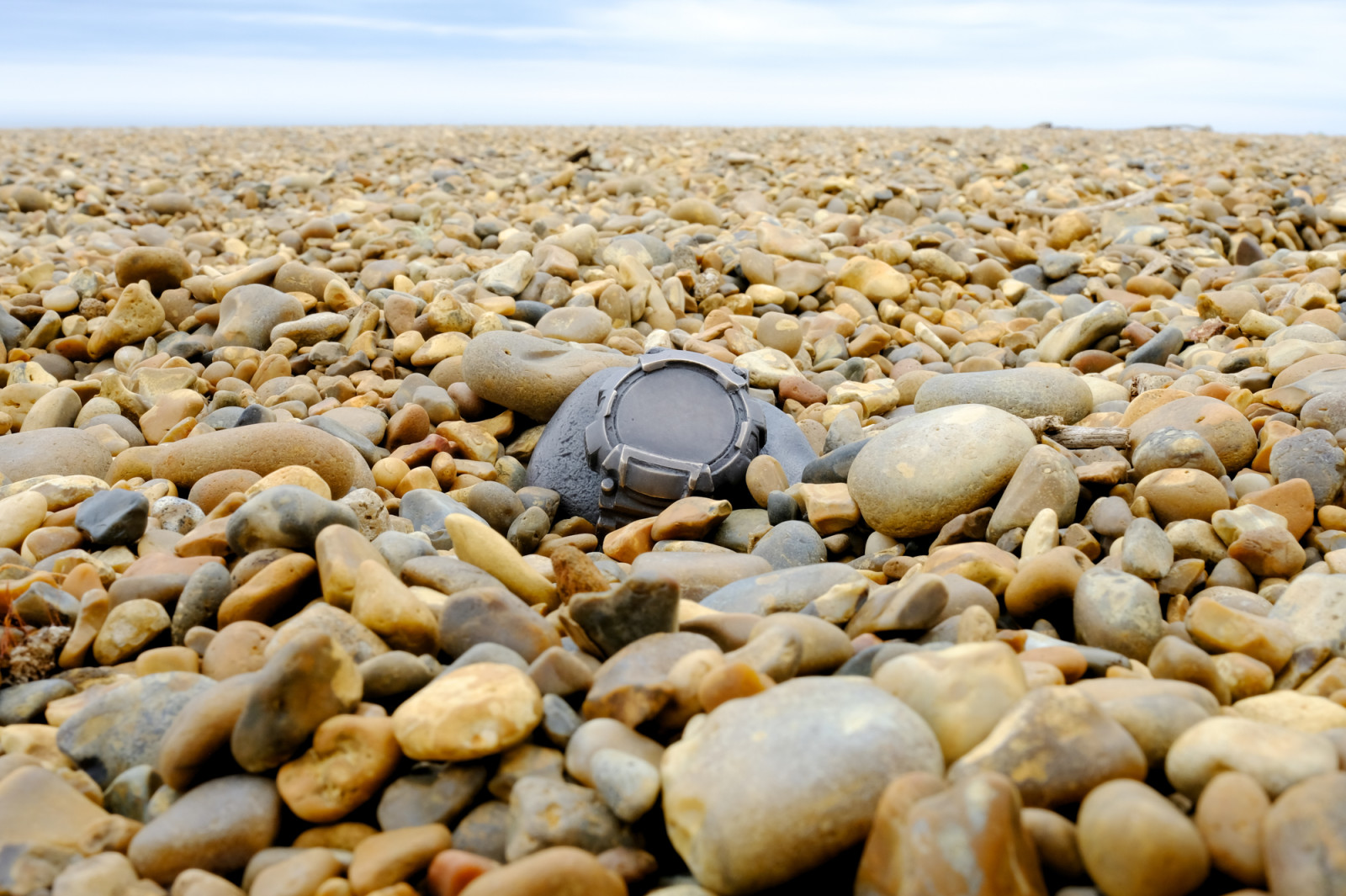
| Ryan Gander, In search of time, 2021, bronze edition pictured at the artist’s local beach. Photo © Ryan Gander, courtesy of the artist.
| |
|

| Photo © Adrian Deweerdt | |
|
LUMA Arles, a 27-acre creative campus at the Parc des Ateliers in the city of Arles, opened to the public on June 26. Work by over 45 artists and designers is featured in the opening programme, with special new commissions for LUMA by major international artists. At the heart of the site is Frank Gehry’s 15,000-square-metre tower, a twisting geometric structure finished with 11,000 stainless steel panels. The Tower houses exhibition galleries, project spaces and the LUMA’s research and archive facilities, alongside workshop and seminar rooms. The Tower houses Philippe Parreno’s permanent commission Danny and Liam Gillick’s design for communal areas, entitled Laguna Gloria. In addition, on view in the Tower are a commissioned work by Tino Sehgal, This Element, and works from the collection, among them, Anri Sala’s 2018 film If and Only If, and Dominique Gonzalez-Foerster’s Virtual Reality Environment, Endodrome, presented at the 2019 Venice Biennale. The Library is on Fire, a new commissioned work by Dominique Gonzalez-Foerster and Charles Arsène-Henry, will be inaugurated in September 2021. In the industrial Grande Halle in the Parc des Ateliers, Pierre Huyghe’s exhibition After UUmwelt will be on view through October 2021. The campus is also home to seven former railway factories, four of which have been renovated by Selldorf Architects as exhibition and performance spaces. The surrounding gardens and public park are designed by landscape architect Bas Smets.
|
|
|
Cemile Sahin – Akademie der Künste, Berlin
|
|
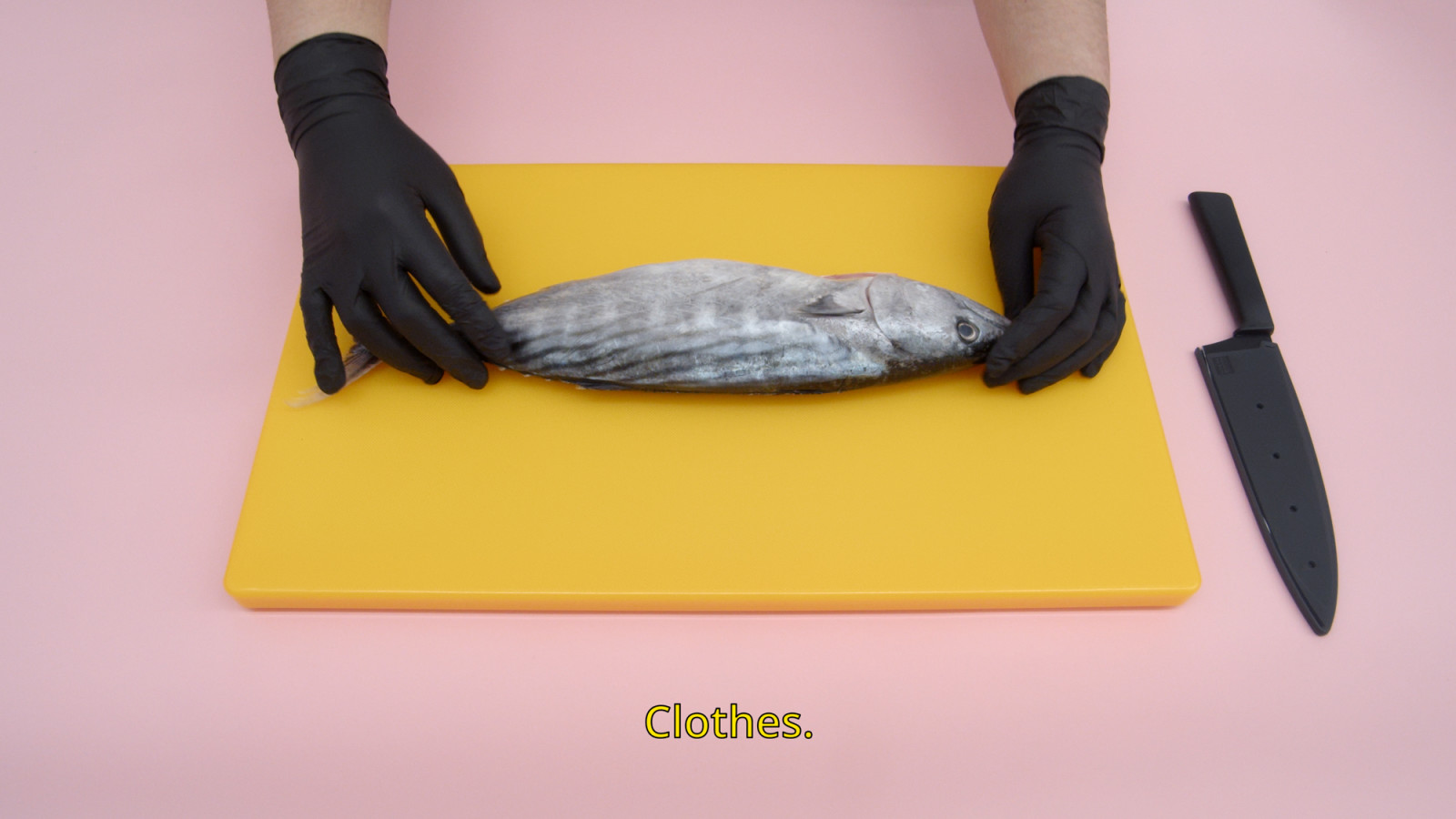
| Film still: Cemile Sahin, Bad People, Bad News, 2021, essayistic film installation, Kurdish with English subtitles.
© Cemile Sahin | |
|
Cemile Sahin, Bad People, Bad News, 2021 is on view in the exhibition Arbeit am Gedächtnis Transforming Archives at Akademie der Künste, Pariser Platz, Berlin through September 19, 2021.
In this essayistic film, the different contexts, stories and experiences of three Kurdish women are recounted and interwoven. They meet every year in a different presidential suite of a hotel to celebrate the death of the ex-president and dictator Saddam Hussein. The focus is on a box they always carry with them. It is an archive of drawings, texts and events that they created after Hussein's death. From this collection they draw details and cues that set their stories in motion again and again. In this way, an overall narrative is formed about states, dictatorships, monuments, terror and questions about power and interpretive sovereignty, originality and forgery. The film resists the staging of media images by avoiding them altogether and negotiates the possibilities of memory itself as it tells a story about disappearance. |
|
|
Thomas Demand and Martin Boyce – CAMERE CHE SOGNARONO CAMERE |
|
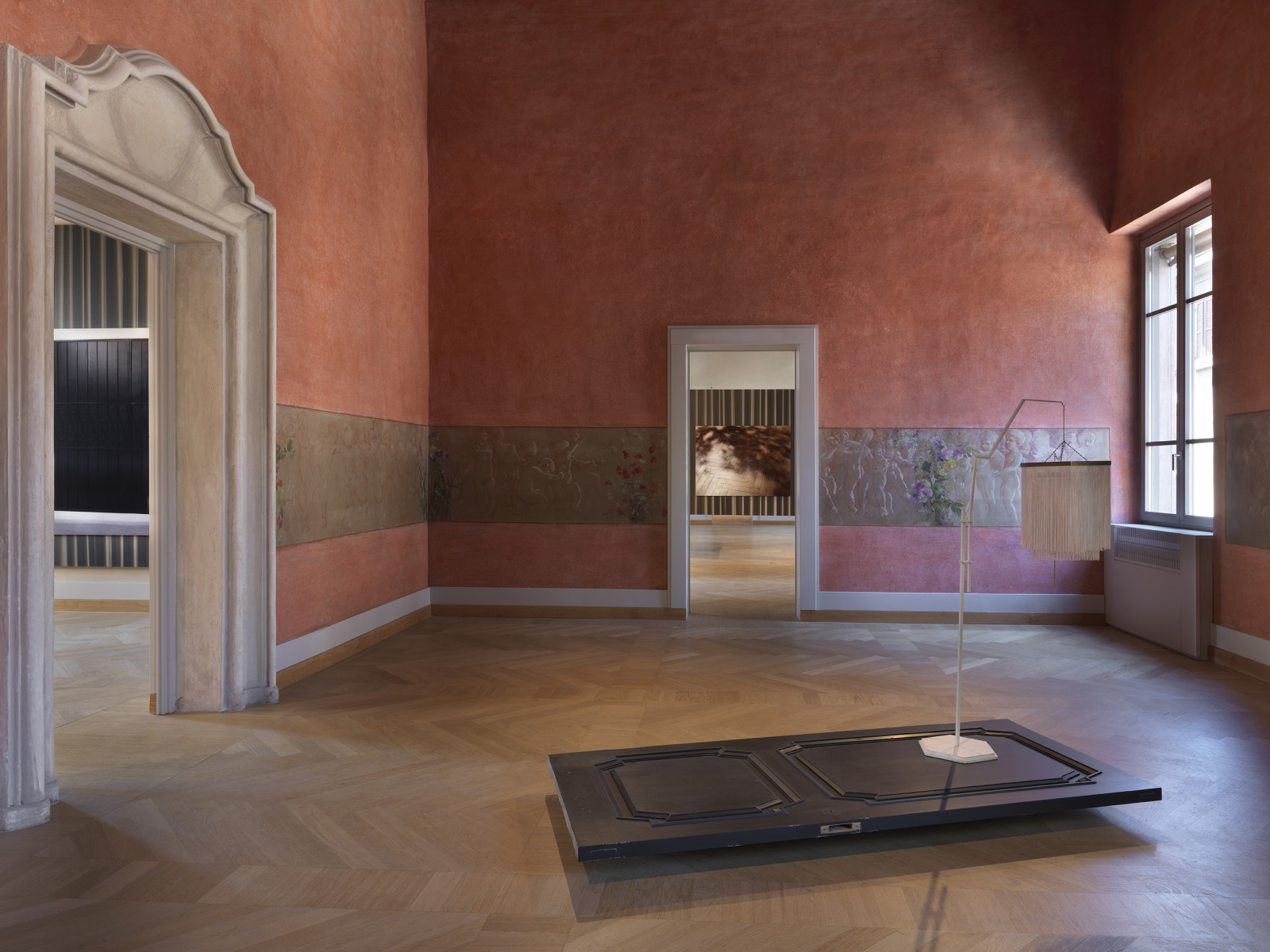
| Exhibition view: CAMERE CHE SOGNARONO CAMERE, with Thomas Demand and Martin Boyce, Fotografia Europa, 2021. Photo © Dario Lasagni © VG Bild-Kunst, Bonn 2021
| |
|
Closing this Sunday, July 4, 2021, CAMERE CHE SOGNARONO CAMERE, a project for the Girefin Contemporary Art Collection joins a conversation between the works of Thomas Demand and Martin Boyce. The two artists have been working with photography for many years but make a very specific use of the medium. The authors hope to trigger a dense visual dialogue between their works, offering an inspiring and complex experience, catenating references, narratives and associations. The exhibition architecture by Thomas Demand provides a peculiar and memorable encounter with the artworks within the palatial exhibition space. The official exhibition instagram can be followed at @camerechesognaronocameremostra
|
|
|
Gabriel Kuri – Saint-Martin Bookshop, Brussels
|
|

| Photos © Kristien Daem | |
|
Gabriel Kuri's Offering, 2021, a multi part sculpture commissioned by Saint-Martin Bookshop stems from an array of sculptural props snugly nestled in a large wooden crate lined with customised foam. The objects embedded in the foam appear to construct both a biography and an overview of major themes in the artist's practice: a used dictionary, a well-worn wallet, and an outdated mobile phone are at its center. An over-dimensional credit card with the artist's name, an equally large coin, and lottery tickets refer to currency and exchange. Boulders and mollusk shells have also featured in Kuri's sculptures in the past. Every week over a period of one month, until July 8, two or more of these elements find their way out of the device, and onto display tables, visible from the street through the shop windows. Dieter Roelstraete has written a beautiful text on the project. You can read it HERE
|
|
|
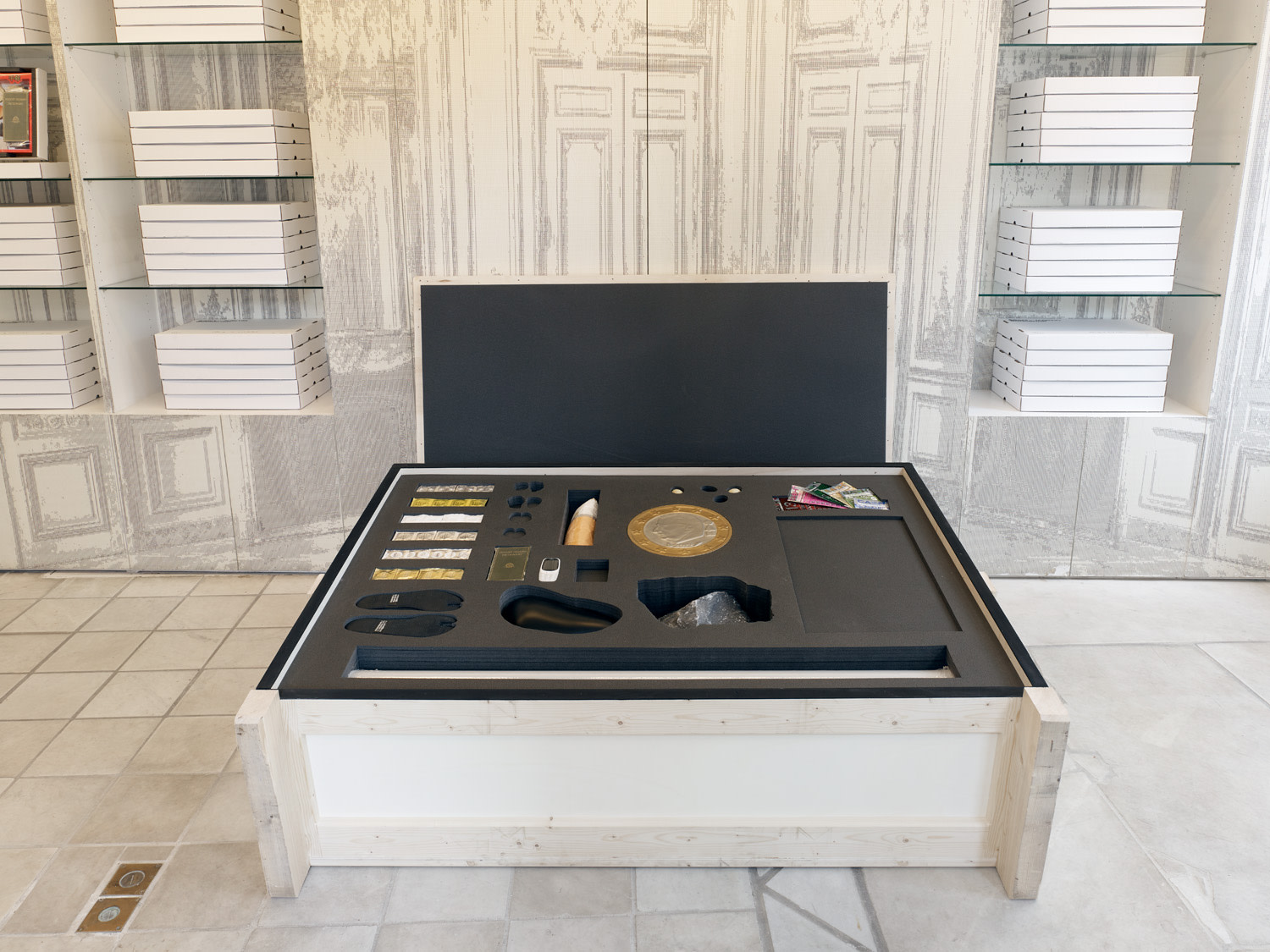 | Exhibition view: Gabriel Kuri, Offering, Saint-Martin Bookshop, 2021. Photo © Kristien Daem | |
|
On the occasion of Kuri's presentation, Saint-Martin Bookshop has also a special edition made entirely from paper, entitled Offering (to Saint-Martin), 2021. Inspired in joss paper offerings widely used in funerals in Hong Kong, Kuri's edition also contains realistic volumetric paper renderings of material objects of aspiration, desire and status. These paper boxes with depictions of commodities and consumer articles – ranging from the generic to the brand specific – are ceremonially burned in order to rise up and accompany the deceased onto the afterlife, providing everlasting wealth or that which the individual may have wished for but could not afford. Like these traditional offerings, Kuri's is also adorned with words and phrases that set the mood for transcendence. Kuri has shown sustained interest in producing books over the years, with particular interest in paper for both its materiality, and its properties as a carrier of information and value. Parallel to the echo or representation of artworks in the book form, Offering provides its light-weight and scaled down portable version of an otherwise larger presence, further rendered vulnerable in its potential transformation into ashes and smoke. Available at Saint-Martin Bookshop HERE
|
|
|
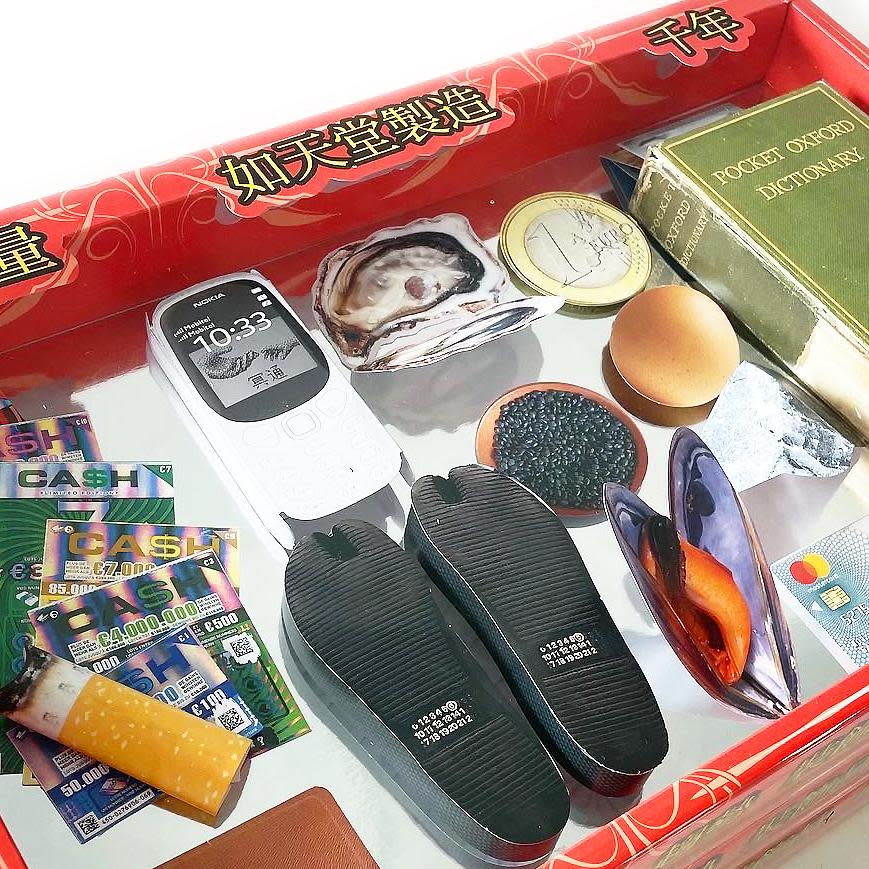
| Gabriel Kuri, Offering (to Saint-Martin), 2021, paper wrapped in ph neutral cellophane, 28 x 45 x 4 cm, edition of 200. Published by Saint-Martin Bookshop. Photo © Gabriel Kuri | |
|
Etienne Chambaud / Vincent Normand
Counter History of Separation
|
|
|
Rosa Barba
From Source to Poem
2017
Publisher: Hatje Cantz
Languages: English, Italian
Available here
|
|
|
Simon Fujiwara
Hope House
2019
Publisher: Kunsthaus Bregenz
Languages: English, German
Available here
|
|
|
Ari Benjamin Meyers
Tacet in Concert
2019
Publisher: Corraini Edizioni
Language: English
Available here
|
|
Cemile Sahin
ALLE HUNDE STERBEN
2020
Publisher: Aufbau Verlag
Language: German
Available here
|
|
|
Etienne Chambaud – Inexistence is kindly supported by the Stiftung Kunstfonds, NEUSTART KULTUR program. |
|
|
|
|
